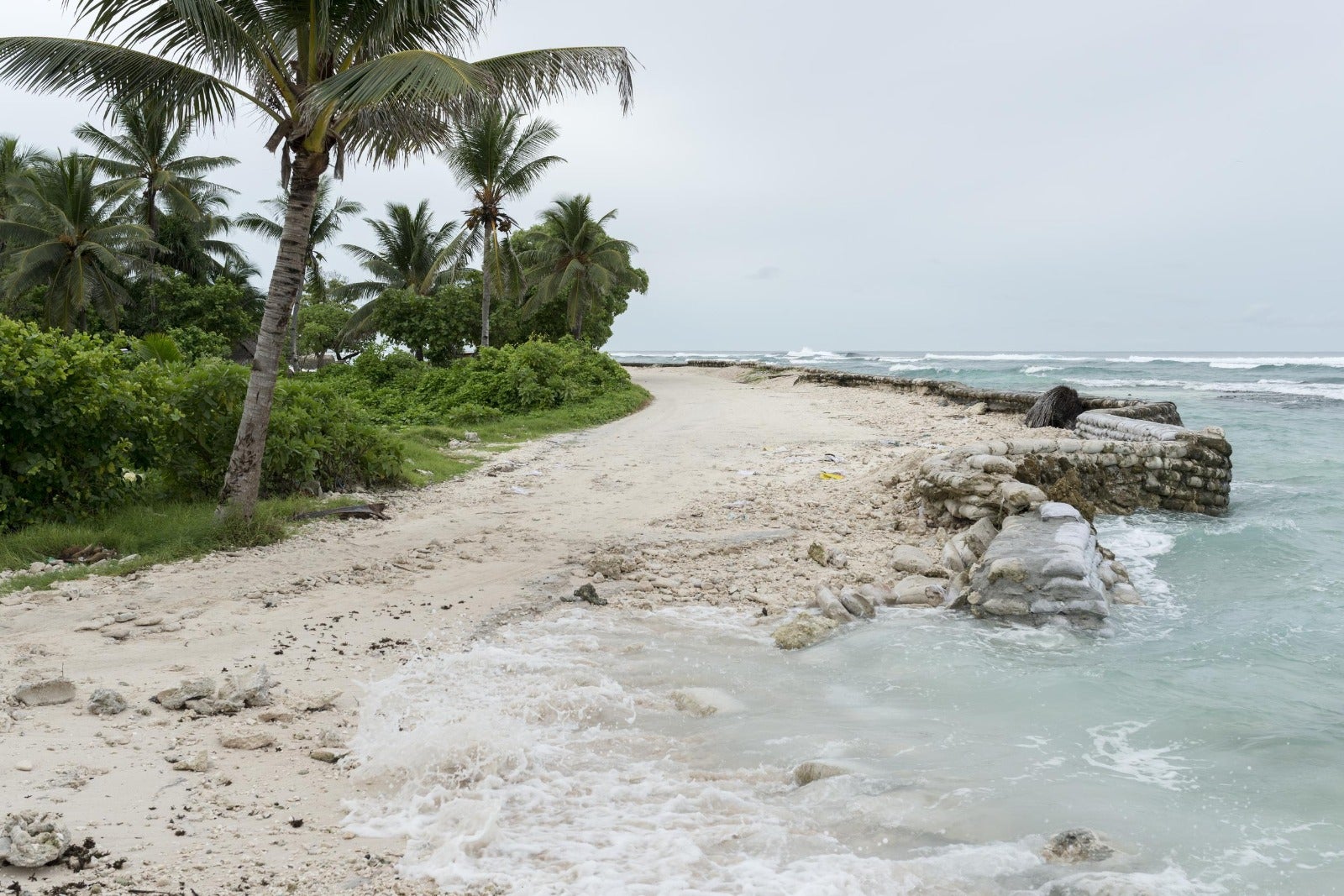Sea level rise threatens low lying islands like the Maldives – it isn’t enough to simply adapt to the change
Small island developing states are the first to feel the effects of the climate crisis, but have little power to stop it – it’s the responsibility of all nations to take action to protect them


Your support helps us to tell the story
From reproductive rights to climate change to Big Tech, The Independent is on the ground when the story is developing. Whether it's investigating the financials of Elon Musk's pro-Trump PAC or producing our latest documentary, 'The A Word', which shines a light on the American women fighting for reproductive rights, we know how important it is to parse out the facts from the messaging.
At such a critical moment in US history, we need reporters on the ground. Your donation allows us to keep sending journalists to speak to both sides of the story.
The Independent is trusted by Americans across the entire political spectrum. And unlike many other quality news outlets, we choose not to lock Americans out of our reporting and analysis with paywalls. We believe quality journalism should be available to everyone, paid for by those who can afford it.
Your support makes all the difference.Our first sighting of land after three weeks aboard Greenpeace’s ship Arctic Sunrise was a welcome change from the unbroken horizon of the Indian Ocean. The Republic of Maldives was first visible as if a mirage; as we got closer, it was clear that the islands were flush to the ocean without hills or mountains - unsurprising, as the flattest country on earth - and for many of the islands, the tallest points were the tips of palm trees, holiday cabins, or a handful of high-rises in the capital Malé.
Over 80 per cent of the Maldives’ 1,000 plus islands are less than 1 metre above sea level. The Intergovernmental Panel on Climate Change has predicted that the seas will rise by up to 1.1 metres by the year 2100, meaning that the very existence of these islands is threatened. Rising sea-level also interacts with other climate factors, such as more intense storms, leading to eroding coastlines, reduced fresh water supply, and loss of habitats. The inhabitants of the Maldives are of course acutely aware of this risk, with ex-President Mohammed Waheed Hassan stating “we are one of the most vulnerable countries on earth”.
There are two approaches to addressing the impacts of the climate crisis that go hand-in-hand: mitigation and adaptation. Mitigation is acting now to limit global heating and its impacts. For countries like the Maldives who do very little to contribute to the climate crisis, there is limited scope for mitigation at the country level. Instead, in the interconnected systems of our world which don’t respect country borders or the nation state, there is a global responsibility to act. Actions which reduce the heating (and therefore the expansion of water) of the oceans, and melting ice-sheets and glaciers, could limit sea level rise to just 30 centimetres under best case scenarios. This requires concerted, coordinated and committed action by nations who are driving these processes through excessive use of fossil fuels: action which is currently lacking.
As climate breakdown is already impacting communities and ecosystems across the planet, adjusting to current and expected risk is necessary: this is adaptation. Since the late 1990s, the Maldives have been pumping sand from the seafloor to create the artificial island of Hulhumalé, in response to the threat posed by the climate crisis. Currently, around 50,000 people live on the island, with ambitions to house a quarter of a million by the mid-2020s. Climate-resilient design has been incorporated from the start, including wider streets to increase wind flow and reduce air-conditioning use, electric buses and bike lanes, and urban planning which reduces car-use by placing schools and parks in close proximity to homes, a significant proportion of which are social housing. The city also aims to utilise extensive solar power and to harvest rainwater.
Faced with social, ecological, political or economic pressure, migration is also a reasonable adaptive response to the climate crisis. Projections suggest between 25 million and 1 billion environmental migrants will move within and across borders by 2050, the majority of whom will be within Latin America, the Caribbean, South Asia and Sub-Saharan Africa. Those who cannot move away from an area of climate risk - known as “trapped populations” - remain highly vulnerable to the direct and indirect impacts of the climate crisis, such as extreme weather events, health risks, and food insecurity.
In early 2020, a landmark ruling by the United Nations human rights committee paved the way for protections - including the ability to migrate - for people whose lives and wellbeing are threatened by the climate crisis. Kiribati, like the Maldives, is a small island developing state which faces similar challenges, including a growing population in limited space, susceptibility to extreme weather events, and the threats posed by sea level rise. Ioane Teitiota, a man from Kiribati, applied for asylum in New Zealand, stating that his family’s life was at risk due to salt water intrusion and crop failure, climate related health threats, and social violence and tensions where sea level rise had caused other islanders to migrate. While the UN found that Teitiota’s deportation from New Zealand had not been unlawful because he didn’t face an immediate danger, it recognised that the climate crisis can represent a serious threat to life, and opens the door to future successful asylum claims where “the effects of climate change may expose individuals to a violation of their rights.”
Small island developing states are our canary in the coal mine when it comes to the climate crisis. At the sharp end, they are the first to feel the effects, and as a result, are understandably ambitious with adaptation measures. But adaptation also comes at a cost. Reclaiming land and building artificial islands has significant impact on the local environment and ecosystems: dredging up sand destroys reefs, and the sediment produced blocks out sunlight, which limits coral’s ability to feed, grow and reproduce.
Healthy oceans and coastal habitats, like mangroves and wetlands, offer great protection from floods and storms - and they keep carbon safely locked away, helping to slow climate breakdown. For communities living by the sea, protecting these habitats is often a simple way to boost resilience while also supporting livelihoods and food security.
To tackle the climate crisis we must deploy both adaptation and mitigation measures. To mitigate effectively, we need strong, immediate, decisive action to be taken by all nations - especially those with the highest historical emissions who have benefited most, like the UK. This November, the UN’s climate change conference Cop26 is being held in Glasgow, offering the UK the opportunity to lead by example and enact policies which are a lifeline to countries like the Maldives, and to all of us who rely on a healthy planet for survival.
Dr Rita Issa is an NHS GP and onboard medic for Greenpeace’s boat Arctic Sunrise. This is the fifth article in her series from the Indian Ocean for The Independent: read the others here
Join our commenting forum
Join thought-provoking conversations, follow other Independent readers and see their replies
Comments